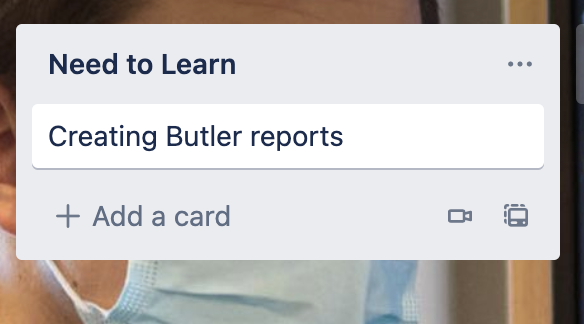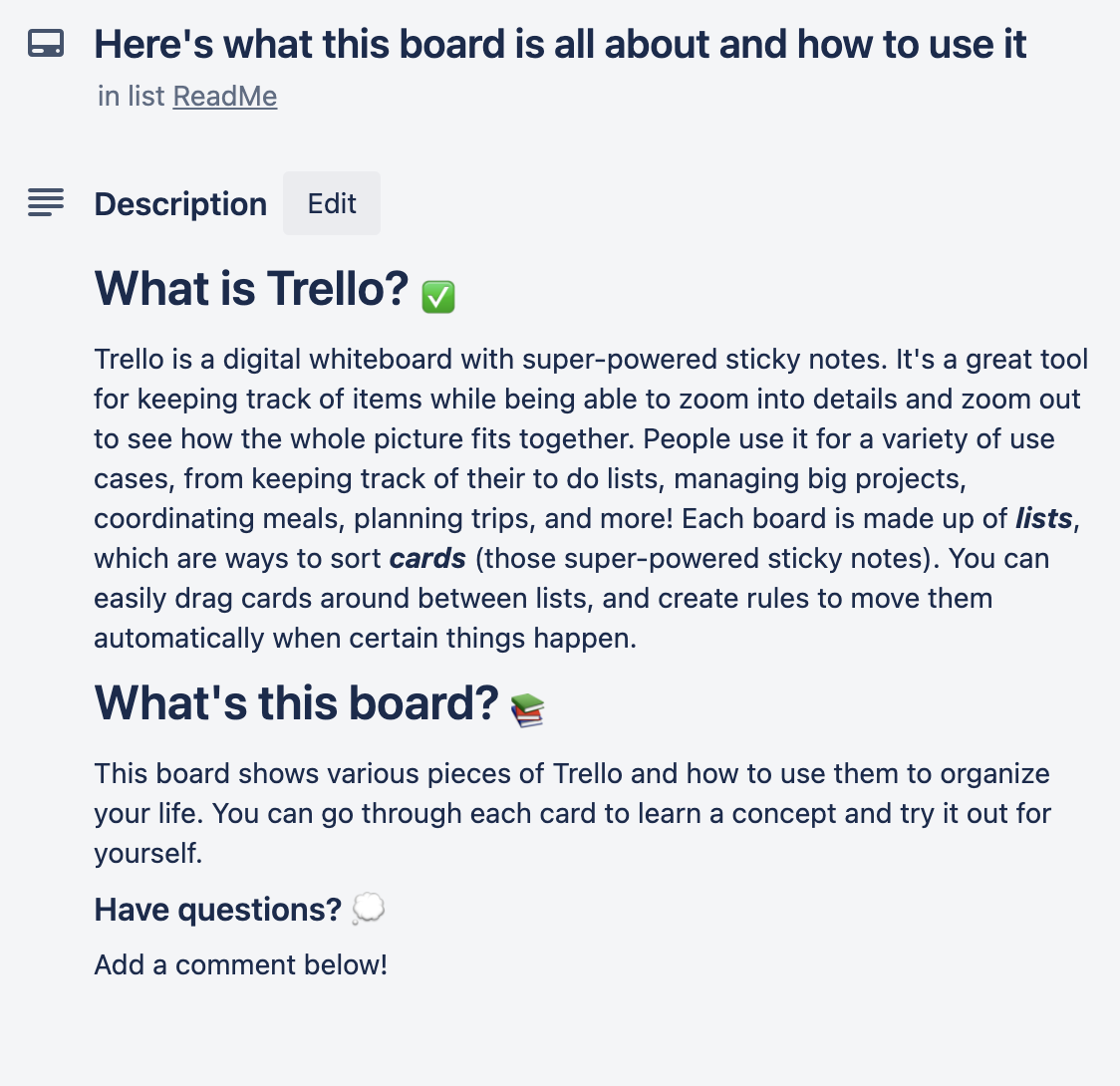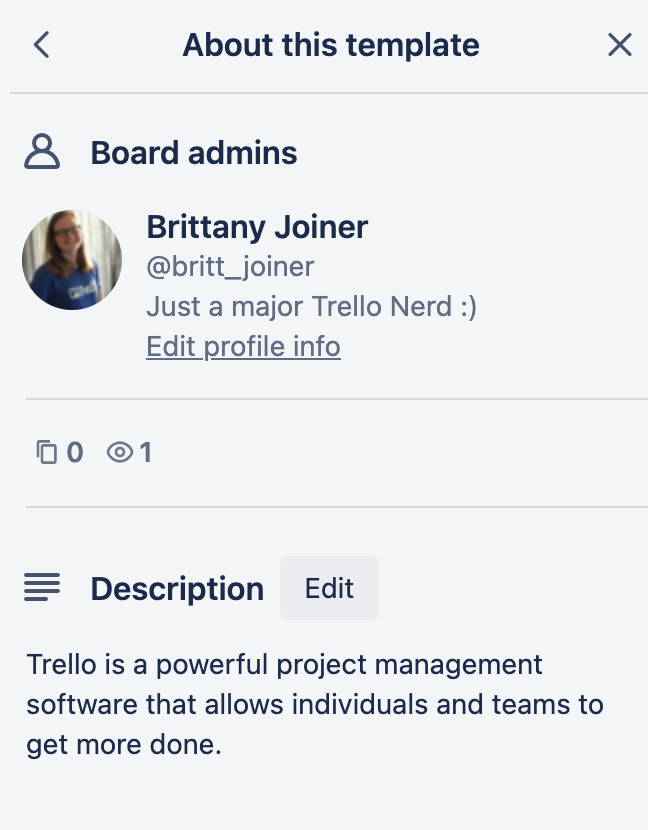Have you ever wanted to become an expert in something but didn’t know the right approach? Or perhaps you’ve got an exam coming up and you need to make sure you’re crystal clear on the content? Being able to understand concepts and communicate them clearly is essential, no matter what you’re doing. As a leader, it’s important to be able to grow and share knowledge with those around you.
But sometimes it’s overwhelming to think about really learning a subject. I recently discovered how to use the Feynman Technique to grow your expertise in a certain area, so naturally, my first thought was… can we use Trello to help with this? Well, yes of course we can!
What Is The Feynman Technique?
The Feynman Technique is a way to study and build your knowledge of a subject. It was developed by Richard Feynman, a brilliant American physicist from the 20th century. Even if you aren’t studying science, you can still learn a thing or two from his approach and apply it to anything you want to learn.
Start by picking what you want to learn. For example, I’ll pick Trello. Seems appropriate right?
Once you’ve got your topic, apply Feynman’s four-step process like this:
- Write down everything you know about the topic. Break it down into as many pieces as you can.
Example: Creating a board, creating a card, adding due dates, filtering cards. - Teach someone those concepts.
Example: Show your partner or best friend how to use Trello. - As you teach, you’ll be asked questions and find more knowledge gaps. Write those down and then study them.
Example: How to add attachments to cards, creating a template for a new card or board, creating recurring cards each day with automation. - Simplify your knowledge so that anyone can understand what you’re saying.
Example: Lead a workshop at your company on how to use Trello.
Sounds like a nice cycle, right? You know something, you teach it, discover things you don’t know, you learn those new pieces, then make it simple and teach it again. You might think that someone who uses fancy jargon and concepts you don’t understand must be really well versed in a subject and is much smarter than you. But the truth is, the real smarties are able to make their subject crystal clear to newbies, grandmas, and well, anyone else!
Why Does It Matter To Leaders?
So this sounds like a great study method, but what does it have to do with being a better leader? Leaders need to be experts in their field, while also sharing that knowledge with their team and leading them down a path together.
Communication is extremely important for leaders because if you can’t communicate your vision, you’ll lose your people. Having a grand vision for the future is great, but if you can’t explain it in clear terms to people who maybe don’t think exactly like you, you might be on a solo journey.
Using Trello
If you’re ready to apply the Feynman Technique, open a new tab, create a Trello board and follow along as I’ll show you how to use Trello to accomplish this. In fact… you don’t even need to create a new board from scratch… you can just copy this template.
Ready? Let’s go.
List What You Know
Once you’ve copied the template, change the name to something you’re trying to learn. I like to think of myself as an expert on Trello, so I’ll keep using that as my example on my Trello board (how meta).
The first step is to list what you already know about a subject. I created a list called “What I Know”, and made a card for various features I’m familiar with in Trello.

Inside each card, add some details to the description to write down what you know about the concept. You can use checklists or Custom Fields to break down the concept into smaller parts.

Do this for each of the cards you’ve created. You might come across a few that are too detailed. If that’s the case, break them up into multiple cards.
You’re feeling pretty good right now, eh? You probably know more than you thought. If that’s not the case, create a list called “Need to Learn” and add any concepts or ideas that you know exist, but don’t know well enough to explain to someone. Then, go learn those and move them into your “What I Know” list!

Teach And Share With Others
You’ve assembled a handful of cards now, so pat yourself on the back! Maybe you don’t feel like an expert yet, but you’re well on your way.
As intimidating as it might sound, the next step is to teach people those concepts. But don’t worry—when they ask questions you don’t know the answer to, that’s a good thing because that’s something else you get to learn and add to your knowledge toolbox.
One way to teach others is to find a friend (ideally one who is at least somewhat interested in the content) and ask if you can walk them through it. You can also find questions online and try to answer them. Turns out I’ve been “accidentally” practicing the Feynman Technique by answering questions on the Trello section of the Atlassian Community.
When you come across something you don’t know, or someone asks you a question, add that to your “Need To Learn” list. If it’s easier, you can also add checklists to a current card concept and later turn that checklist item into its own card.
Fill New Knowledge Gaps
Now that you’ve got some new areas to learn about, it’s time to dig in. Pick cards and start researching those topics and documenting what you learn, just like you did in Step 1.
This step doesn’t ever have to end—nor should it! You can keep sharing a topic and learning more about it to dive as deeply as you want. Malcolm Gladwell popularized the 10,000 hours rule (if someone wants to be an expert, they must practice their skill for about 10,000 hours) as helpful to becoming an expert in something. Even when you think you’re done learning, there’s always more, but don’t let this paralyze you. See this as an opportunity to continue to grow!
You can also learn more by adding more students. Perhaps you start with teaching a friend, but then you move to a group at work. Maybe you even sign up to give a talk at a conference or record a video of yourself demonstrating your expertise on social media.
Simplify As Much As Possible
The final step of the Feynman Technique is to take your knowledge and simplify it. This likely means you’ll want to clean up your Trello board a bit.
Practice writing out your thoughts clearly. Asynchronous communication is great for practicing the Feynman Technique because you have to keep things pretty simple if you are using written communication. When you’re unable to answer a reader’s questions right away it forces you to explain the concept concisely and think of any possible questions they may have.
Let’s go back to my example about learning Trello. If I’ve grouped a lot of concepts on that board throughout this process, then it’s probably a pretty hefty board with lots of good information that people would find valuable! I could share this board with other people as a way to further help more people learn. If I’m going to make this board public, I need to keep it simple. Up until this point, I’ve been very specific about who I am showing it to, as I’ve had the opportunity to walk them through it. Now I need to assume anyone can see it, and I need to ensure it makes sense to them… even if they’ve never heard of Trello.
One way to achieve this is to incorporate visualizations. You can easily attach images and screenshots to your cards and show them prominently by setting them as the card cover.
Do some card clean-up to add analogies to concepts and make your descriptions more concise. Remove any jargon or examples that only relate to a niche group. Break out cards if you find there is too much information inside of one. This is another good place to refine those checklists and Custom Fields.
Now, let’s step up the simplification game a little more. Can you explain your subject and how to navigate your board in a ‘Read Me’ card? Use just one card to explain what your board is about and how someone can use it.

Want to use formatting rather than big blocks of text? Card descriptions support Markdown formatting.
Was that too easy? Time to level up. Make it even simpler! Use 2-3 sentences in your board description to describe your topic. (You can find your board description settings under “Show Menu” in the top right-hand corner.)

Well done. Now share your board with someone totally new to the subject and see if you get a puzzled face or an “aha, I always wondered about that!” Either way, you’ve learned more about the subject and become more of an expert, but it doesn’t stop there.
Rinse And Repeat
Keep going! Learning new skills is good for your brain, and no matter what you’ve chosen to study, there’s always more to learn. By developing your knowledge and learning to communicate it clearly via the Feynman Technique, you’ll be able to more effectively lead your team on the right path and you’ll also feel more confident in your skills and knowledge.







































